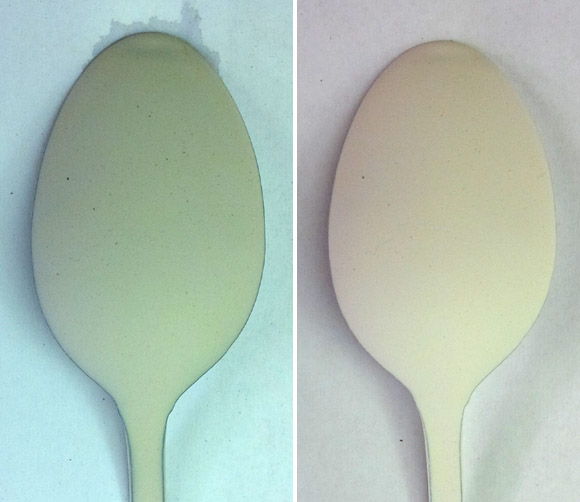The engobe on this stainless steel spoon has not cracked in drying or firing. How?
This spoon was dipped into a ceramic dipping engobe, L3954B. It contains no insight-live.com/material/228">CMC gum, it was only flocculated using powdered Epsom salts. Without the Epsom salts, the engobe runs off, leaving only a film. But, when turned into a thixotropic slurry, it stays on the spoon in an even layer (as a gel), then hardens as it dewaters (left) and finally dries completely (right). With no cracks! It also fires to cone 03 with no cracks. Of course, if this were fired high enough, it would begin to shrink, crack, crawl, melt and then craze, ceasing to be an engobe. Of course, special low-expansion frits and additives and mixing, preparation and application techniques make enamels, which do melt, possible for metals.
Pages that reference this post in the Digitalfire Reference Library:
Epsom Salts, Pure feldspar applied as a glaze: Possible because of the magic of thixotropy., Flocculation

This post is one of thousands found in the Digitalfire Reference Database. Most are part of a timeline maintained by Tony Hansen. You can search that timeline on the home page of digitalfire.com.
